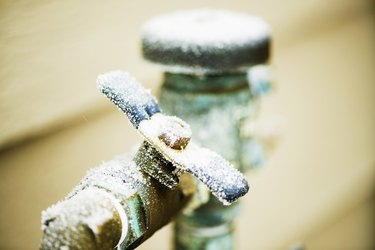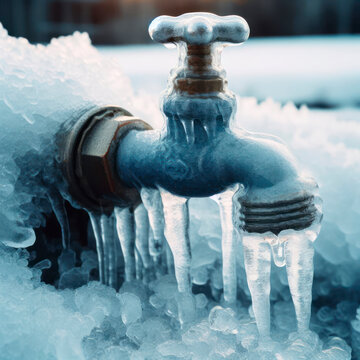The article author is making a few good observations about Prevent Frozen Pipes in general in this great article below.

Cold weather can damage your plumbing, especially by freezing pipes. Here's just how to stop it from taking place and what to do if it does.
Intro
As temperatures drop, the threat of icy pipes increases, potentially causing pricey fixings and water damages. Recognizing exactly how to avoid frozen pipelines is important for home owners in cool environments.
Comprehending Frozen Pipelines
What triggers pipelines to freeze?
Pipes ice up when revealed to temperatures listed below 32 ° F (0 ° C) for extended periods. As water inside the pipelines freezes, it broadens, taxing the pipe walls and possibly causing them to rupture.
Threats and problems
Frozen pipes can bring about supply of water interruptions, home damages, and expensive repair work. Burst pipes can flooding homes and trigger considerable architectural damages.
Signs of Frozen Pipes
Identifying frozen pipes early can avoid them from rupturing.
Exactly how to determine frozen pipes
Look for decreased water flow from taps, uncommon smells or noises from pipelines, and visible frost on exposed pipes.
Avoidance Tips
Shielding prone pipes
Wrap pipelines in insulation sleeves or utilize warm tape to protect them from freezing temperature levels. Concentrate on pipelines in unheated or exterior locations of the home.
Home heating techniques
Maintain interior spaces adequately warmed, especially areas with pipes. Open cabinet doors to enable warm air to distribute around pipes under sinks.
Securing Outdoor Pipes
Garden hose pipes and outside taps
Separate and drain garden hoses before wintertime. Mount frost-proof spigots or cover outside taps with shielded caps.
What to Do If Your Pipes Freeze
Immediate activities to take
If you presume frozen pipelines, keep faucets open up to eliminate pressure as the ice melts. Utilize a hairdryer or towels taken in hot water to thaw pipelines gradually.
Long-Term Solutions
Structural modifications
Take into consideration rerouting pipes away from outside wall surfaces or unheated areas. Include added insulation to attic rooms, basements, and crawl spaces.
Upgrading insulation
Purchase high-grade insulation for pipelines, attic rooms, and walls. Proper insulation helps keep regular temperature levels and lowers the threat of icy pipelines.
Verdict
Preventing icy pipelines calls for proactive actions and fast feedbacks. By recognizing the causes, indicators, and safety nets, property owners can protect their pipes during winter.
5 Ways to Prevent Frozen Pipes
Drain Outdoor Faucets and Disconnect Hoses
First, close the shut-off valve that controls the flow of water in the pipe to your outdoor faucet. Then, head outside to disconnect and drain your hose and open the outdoor faucet to allow the water to completely drain out of the line. Turn off the faucet when done. Finally, head back to the shut-off valve and drain the remaining water inside the pipe into a bucket or container. Additionally, if you have a home irrigation system, you should consider hiring an expert to clear the system of water each year.
Insulate Pipes
One of the best and most cost-effective methods for preventing frozen water pipes is to wrap your pipes with insulation. This is especially important for areas in your home that aren’t exposed to heat, such as an attic. We suggest using foam sleeves, which can typically be found at your local hardware store.
Keep Heat Running at 65
Your pipes are located inside your walls, and the temperature there is much colder than the rest of the house. To prevent your pipes from freezing, The Insurance Information Institute suggests that you keep your home heated to at least 65 degrees, even when traveling. You may want to invest in smart devices that can keep an eye on the temperature in your home while you’re away.
Leave Water Dripping
Moving water — even a small trickle — can prevent ice from forming inside your pipes. When freezing temps are imminent, start a drip of water from all faucets that serve exposed pipes. Leaving a few faucets running will also help relieve pressure inside the pipes and help prevent a rupture if the water inside freezes.
Open Cupboard Doors
Warm your kitchen and bathroom pipes by opening cupboards and vanities. You should also leave your interior doors ajar to help warm air circulate evenly throughout your home.

I hope you liked our part on Prevent Frozen Pipes . Thanks for finding the time to read through our blog post. You should take the opportunity to promote this blog if you appreciated it. I treasure your readership.
Apply Now